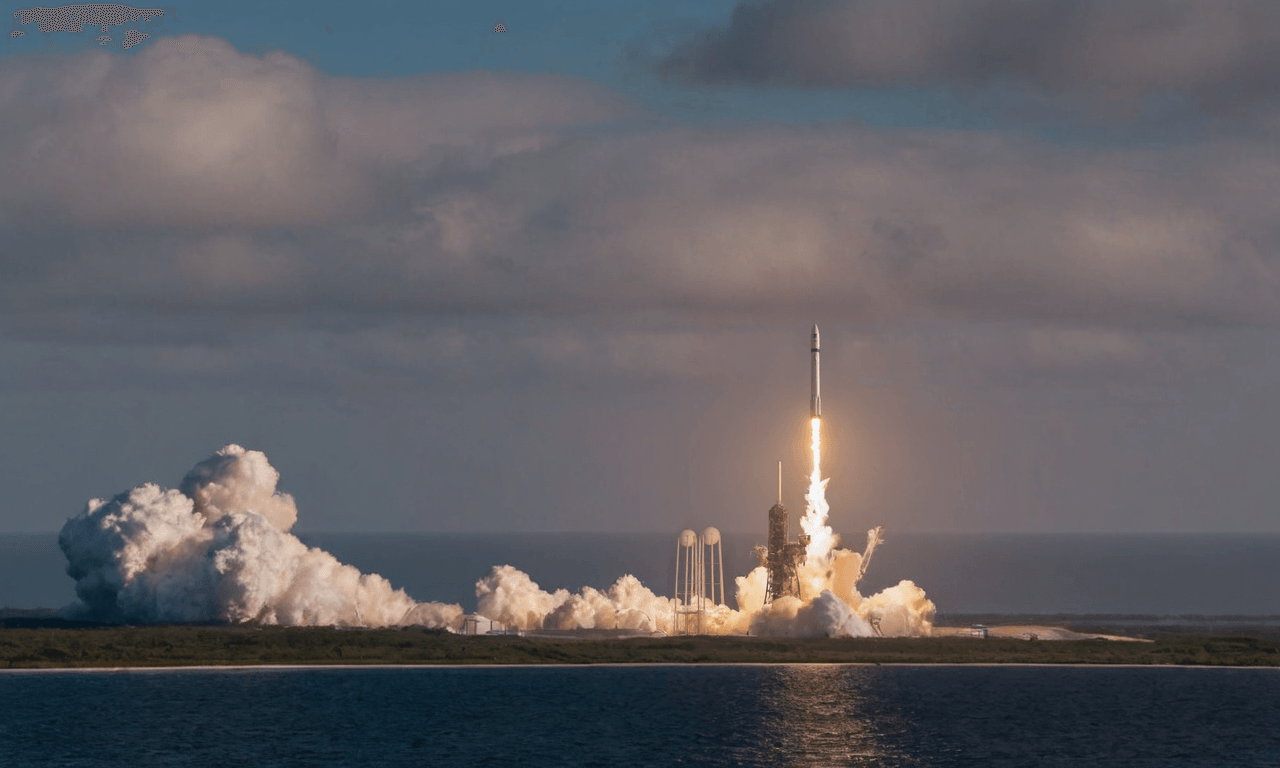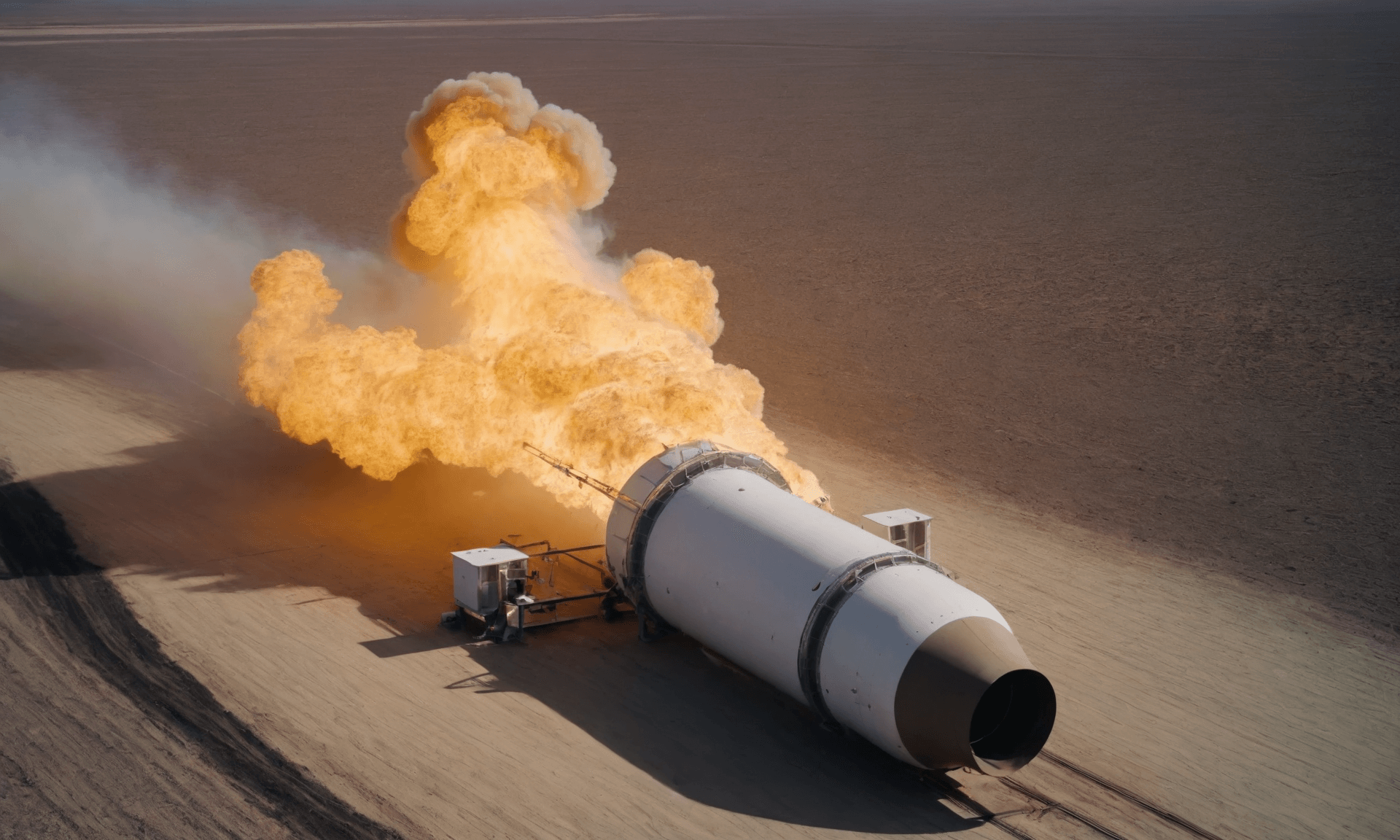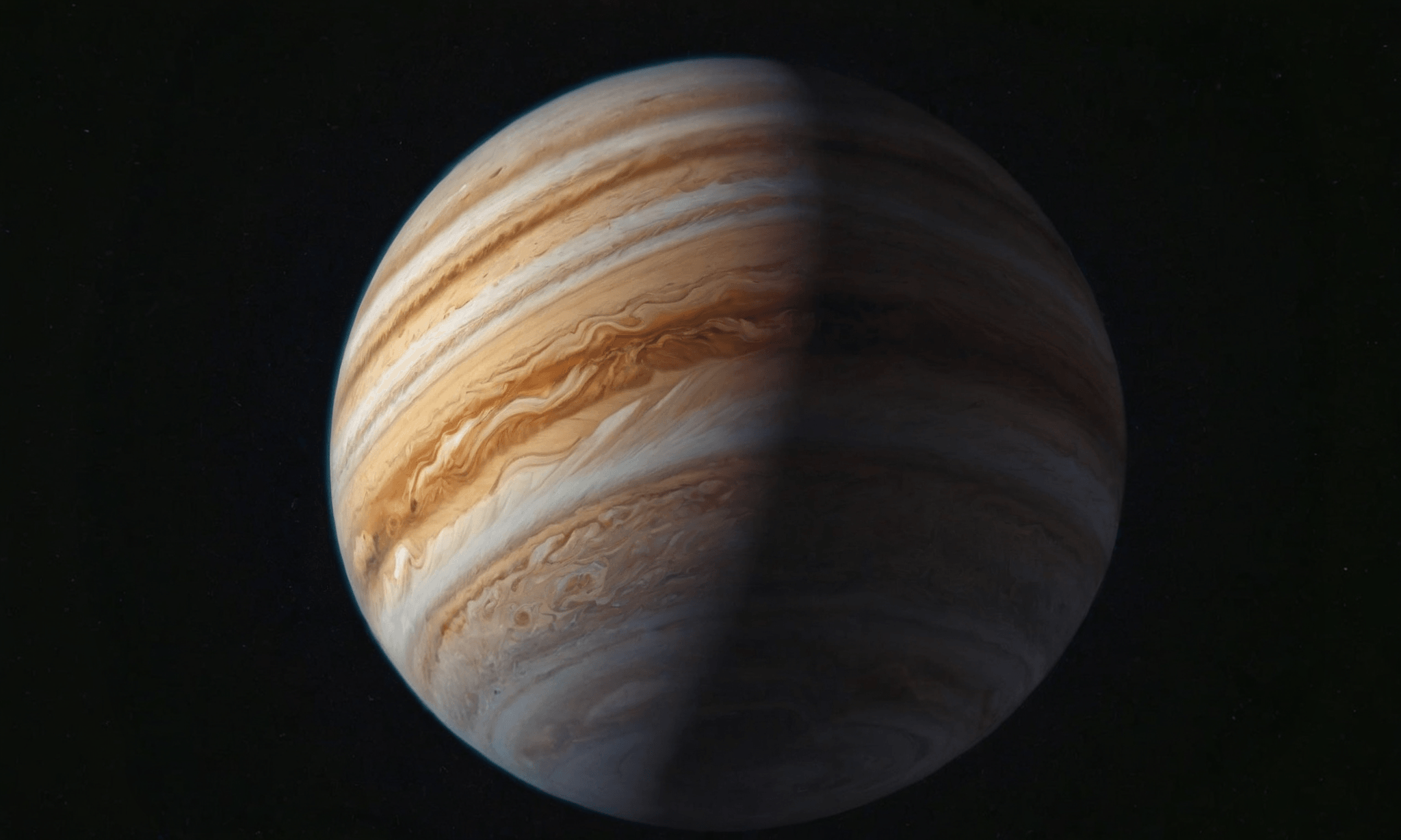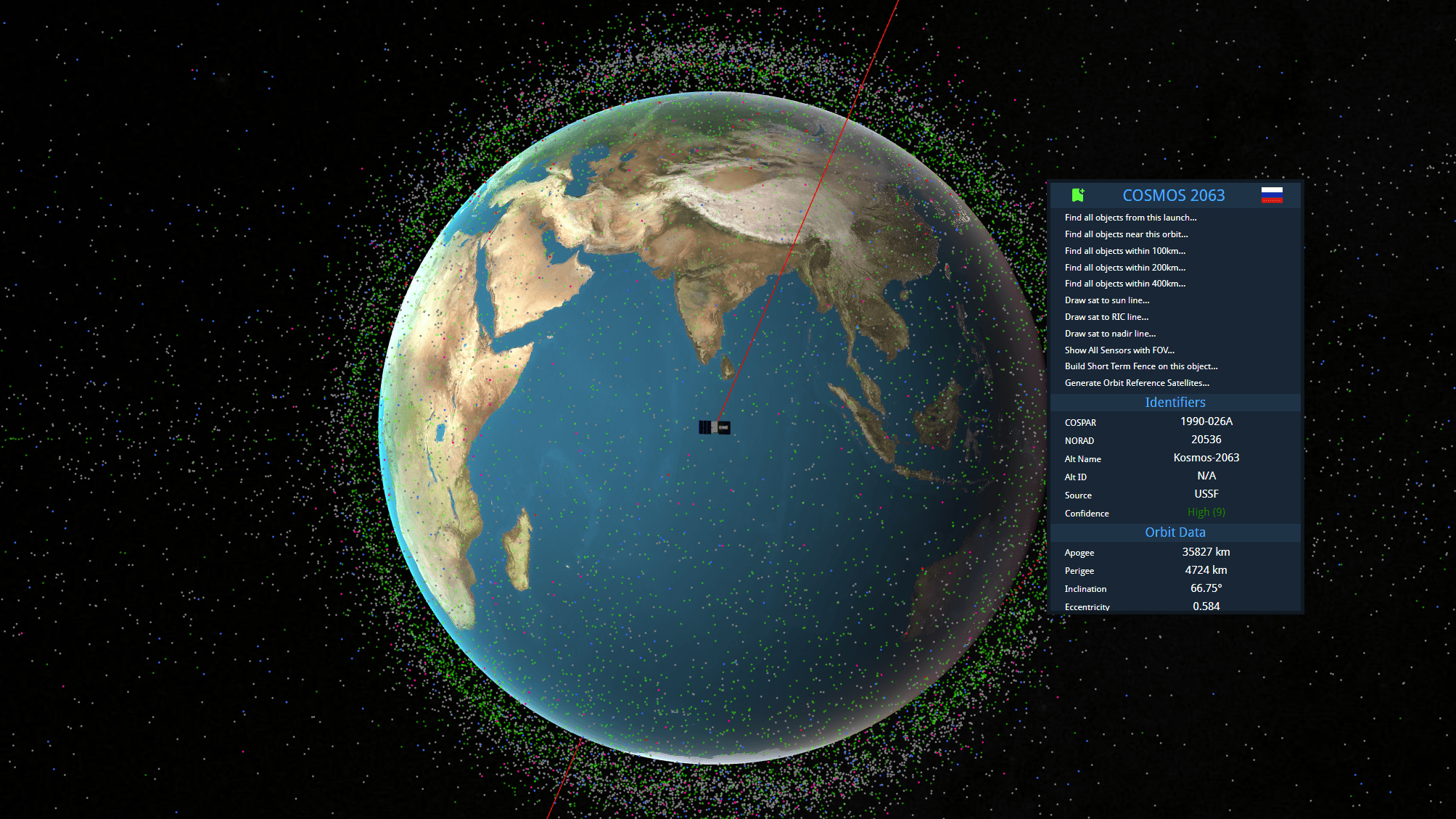· space brief · 6 min read
Space Brief 4 Sep 2024
Today's brief highlights SpaceX's Starlink launch, the sale of Telesat's remote communications services, advancements in hypersonic missile tracking, and more on satellite imagery from the NGA.
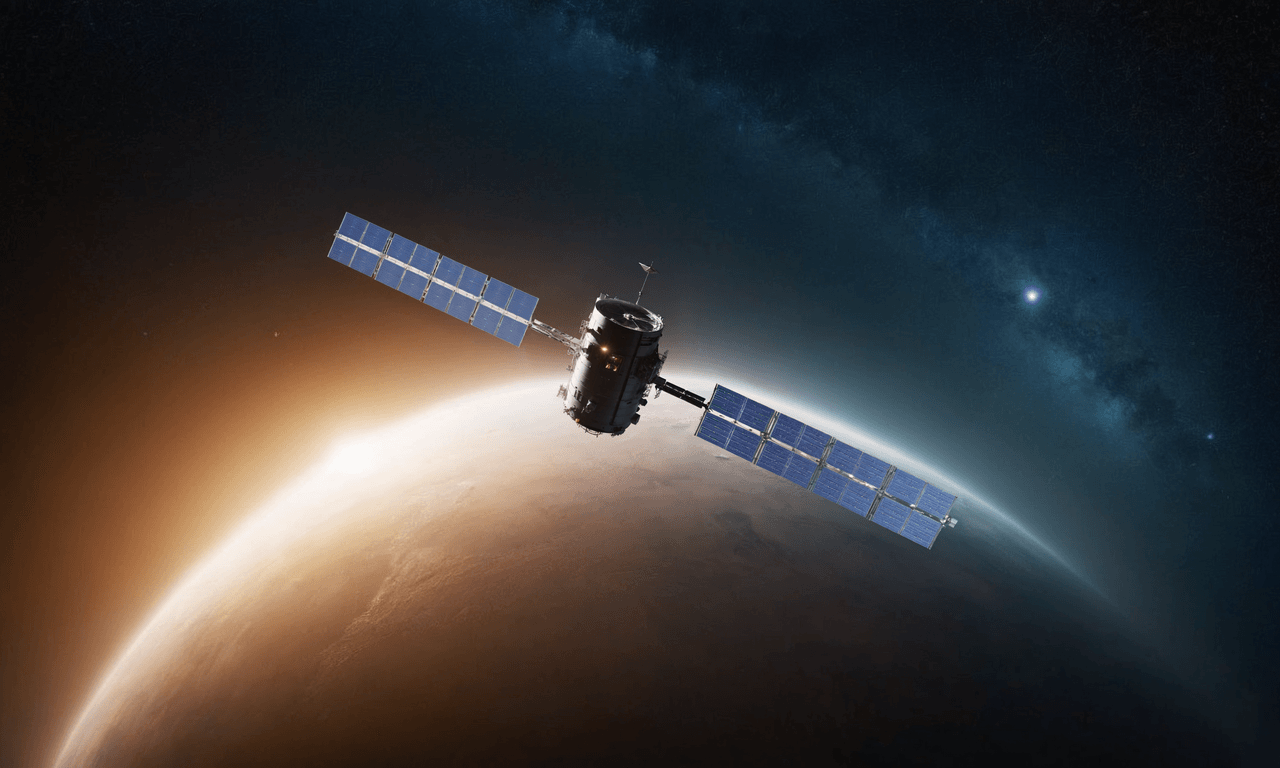
📄Top Stories
Highlights today include SpaceX’s launch of 21 Starlink satellites, Telesat’s sale of remote communications services, and advancements in hypersonic missile tracking and AI-driven satellite imagery analysis. Stay tuned for more detailed insights below.
📰Detailed Coverage
SpaceX Successfully Launches 21 Starlink Satellites
SpaceX has successfully launched 21 new Starlink satellites aboard a Falcon 9 rocket from Cape Canaveral Space Force Station. The launch is a significant step in expanding the Starlink constellation, which aims to provide global internet coverage.
This launch was monitored in real-time to track the deployment and early orbit stabilization of the satellites. Track the latest Starlink satellites and more on our web app.
Read the full story: SpaceFlightNow
Telesat Sells Remote Communications Services Business
Canadian geostationary operator Telesat has offloaded its Infosat Communications division to bolster its finances. The sale will help focus efforts on expanding the low Earth orbit Lightspeed constellation.
This move underscores the growing emphasis on LEO constellations for future communication infrastructure. Track Telesat’s existing satellite assets and anticipated launches on our web app.
Read the full story: SpaceNews
L3Harris Advances U.S. Hypersonic Missile Tracking
L3Harris has made rapid advancements in the U.S. hypersonic missile tracking and defense capabilities, addressing the increasing threats from near-peer adversaries. The technology will enhance national security by providing better detection and interception capabilities.
These developments contribute to enhanced space situational awareness and defense-related satellite tracking technologies.
Read the full story: SpaceNews
NGA Launches Program to Enhance Satellite Imagery with AI
The National Geospatial-Intelligence Agency (NGA) is initiating a $700 million program focused on “data labeling” to improve AI’s ability to make sense of satellite images. This program will enhance the accuracy and reliability of satellite-derived intelligence.
Such advancements are crucial for the evolution of satellite tracking and data analysis. Our web app offers tools to visualize and track these developments in real-time.
Read the full story: SpaceNews
Space Force and Intelligence Agencies Streamline Satellite Imagery Delivery
A new “joint mission management center” has been established at the NGA’s campus to streamline the delivery of satellite imagery. The initiative aims to enhance coordination and efficiently manage satellite data resources.
The collaboration represents a significant step in optimizing data flows and satellite tracking capabilities. Follow related satellite activity on our web app.
Read the full story: SpaceNews
🛰️Satellite Spotlight
- Satellite Name: GALILEO 30 (10E)
- NORAD ID: 59600
- International Designator: 2024-079C
- Launch Date: 2024 (exact date not provided, but likely recent given the year in the international designator)
- Mission: Part of the Galileo satellite navigation system, providing precise positioning and timing services for Europe
- Orbit:
- Inclination: 54.72°
- Period: 844.70 minutes (approximately 14 hours)
- RAAN: 119.58°
- Owner/Operator: EUSPA (European Union Agency for the Space Programme)
- Manufacturer: OHB
- Interesting Facts:
- Galileo 30 is part of the European Union’s independent global navigation satellite system.
- It’s in a Medium Earth Orbit (MEO), which is typical for navigation satellites to provide global coverage.
- The Galileo constellation, when complete, will consist of 30 satellites, making this one of the final additions to the full system.
Current TLE Data:
1 59600U 24079C 24237.92588622 -.00000017 00000-0 00000-0 0 99991
2 59600 54.7288 119.5866 0002179 100.8691 259.2314 1.70474105 2092
Track this satellite in real-time on our web app: Track GALILEO 30 (10E)
🗑️Space Debris Update
Current tracked debris objects: 14002
No significant space debris events reported today.
🚀Upcoming Space Launches
September 4
- SpaceX Falcon 9 Block 5 | Starlink Group 8-11 from Cape Canaveral, FL, USA (12:59 UTC) A batch of 21 satellites for the Starlink mega-constellation - SpaceX’s project for space-based Internet communication system.
September 5
- Arianespace Vega | Sentinel-2C from Guiana Space Centre, French Guiana (01:50 UTC) Sentinel-2C is the third satellite in the Sentinel-2 constellation, which is designed to provide high-resolution optical imagery for land services.
- China Aerospace Science and Technology Corporation Long March 6 | Unknown Payload from Taiyuan Satellite Launch Center, People’s Republic of China (18:20 UTC - 18:50 UTC)
September 6
- SpaceX Falcon 9 Block 5:
- NROL-113 from Vandenberg SFB, CA, USA (01:14 UTC - 05:14 UTC) Third batch of satellites for a reconnaissance satellite constellation built by SpaceX and Northrop Grumman for the National Reconnaissance Office to provide imaging and other reconnaissance capabilities.
- Polaris Dawn from Kennedy Space Center, FL, USA (07:38 UTC - 11:09 UTC) The goal of this mission is to fly higher than previous Dragon missions, perform the first-ever commercial EVA with SpaceX-designed spacesuits, orbit through portions of the Van Allen radiation belt, conduct medical research, and test laser-based Starlink communications in space.
September 9
- SpaceX Falcon 9 Block 5 | Galileo L13 (FOC FM26 & FM32) from Cape Canaveral, FL, USA (23:13 UTC - 00:03 UTC) Two satellites for Europe’s Galileo navigation system. Galileo provides Europe with an alternative to the American GPS and Russian GLONASS constellations, but will be interoperable with both systems.
September 11
- Mitsubishi Heavy Industries H-IIA 202 | IGS Radar 8 from Tanegashima Space Center, Japan (04:00 UTC - 06:00 UTC) The IGS Radar 8 is a Japanese radar reconnaissance satellite. The satellite serves both Japan’s national defense and civil natural disaster monitoring.
- Russian Federal Space Agency (ROSCOSMOS) Soyuz 2.1a | Soyuz MS-26 from Baikonur Cosmodrome, Republic of Kazakhstan (16:23 UTC) Soyuz MS-26 will carry two cosmonauts and one astronaut to the International Space Station.
September 16
- Rocket Lab Electron | Kinéis Killed the RadIoT Star (Kinéis 6-10) from Rocket Lab Launch Complex 1B, Mahia Peninsula, New Zealand (23:01 UTC) Second batch of five satellites for the French Kinéis IoT constellation designed to operate with 25 nanosatellites of 30 kg each.
September 24
- SpaceX Falcon 9 Block 5 | Crew-9 from Cape Canaveral, FL, USA (18:50 UTC) SpaceX Crew-9 is the ninth crewed operational flight of a Crew Dragon spacecraft to the International Space Station as part of NASA’s Commercial Crew Program.
Note: Launch dates and times are subject to change due to technical or weather considerations.
💡Did You Know?
Did you know that the smallest operational satellite ever launched is about the size of a small cheese cube? The KickSat-2 mission, launched in 2019, deployed over 100 tiny “ChipSats” called Sprites. Each Sprite is just 3.5 cm square and 3 mm thick, weighing only about 4 grams. Despite their minuscule size, these femtosatellites contain solar cells, a radio transceiver, and a microcontroller, demonstrating the potential for extremely miniaturized space technology. This breakthrough opens up new possibilities for swarm satellite missions and low-cost space exploration.
🔬Technical Corner
Hypersonic Missile Tracking
Hypersonic missile tracking is a critical aspect of modern space-based defense systems. These missiles, capable of traveling at speeds exceeding Mach 5 (five times the speed of sound), pose significant challenges for traditional tracking and interception methods.
Key aspects of hypersonic missile tracking include:
Advanced Sensors: Utilizing infrared, radar, and other sensing technologies to detect and track missiles traveling at extreme speeds.
Satellite Constellations: Deploying networks of satellites in various orbits to provide continuous global coverage and reduce blind spots.
Data Processing: Implementing powerful algorithms and AI to rapidly process vast amounts of data and predict missile trajectories.
Communication Networks: Establishing robust, low-latency communication systems to relay tracking information to defense systems in near real-time.
Integration with Defense Systems: Coordinating tracking data with ground-based, sea-based, and air-based defense platforms for effective countermeasures.
The advancement of hypersonic missile tracking technologies is crucial for maintaining strategic stability and enhancing global security. It represents a cutting-edge application of space-based observation and communication systems, pushing the boundaries of what’s possible in satellite technology and data processing.

